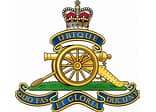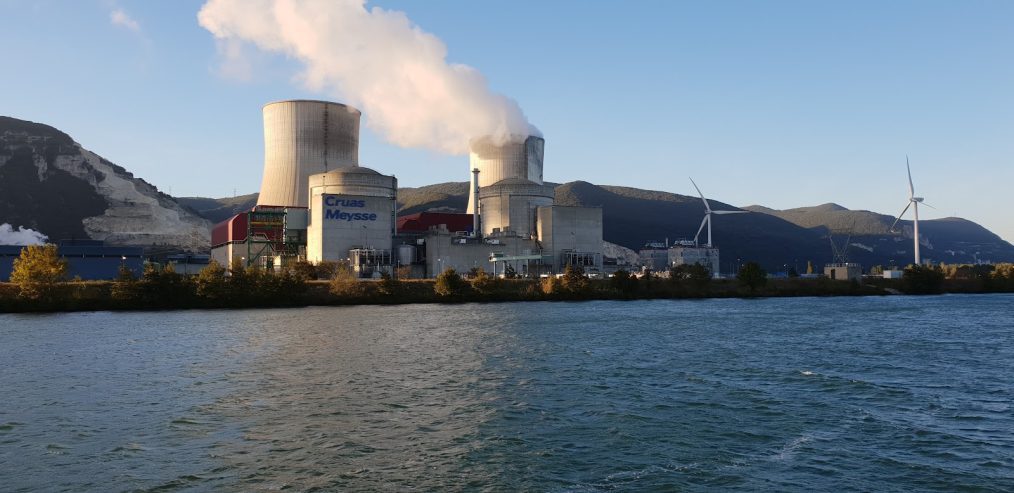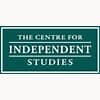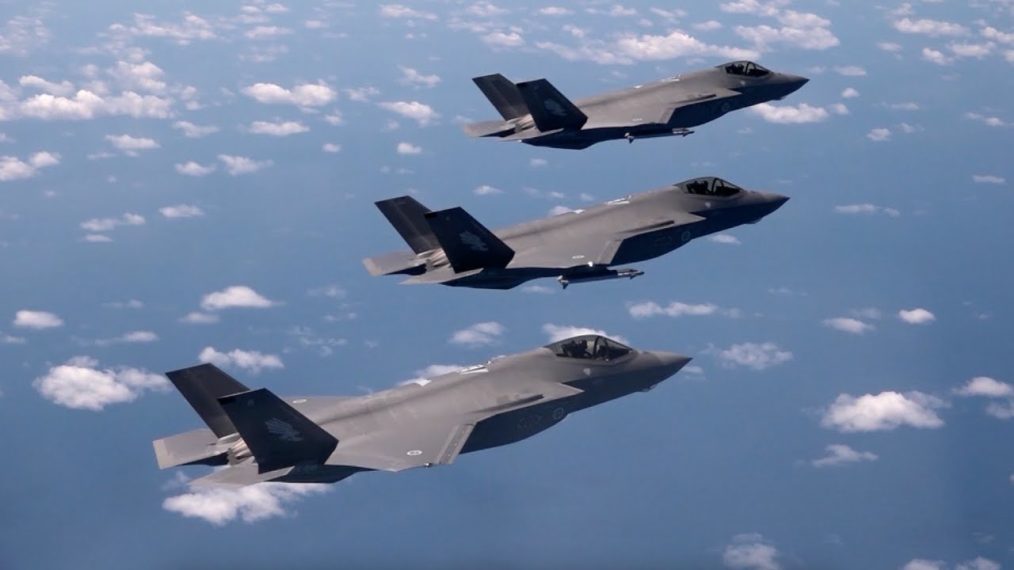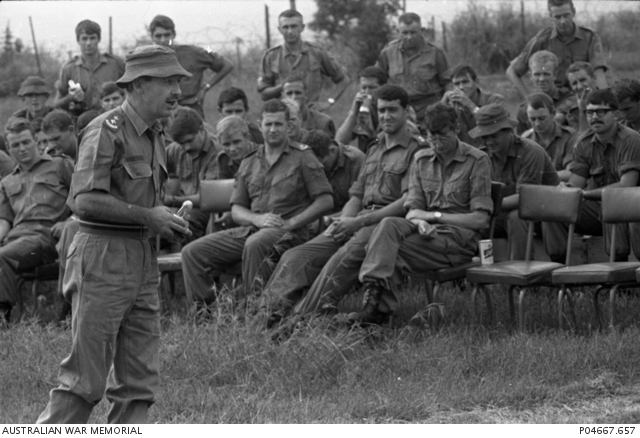ED: This week we profile Alby Morrison a true leader of men.
 Major General Alan Lindsay “Alby” Morrison, AO, DSO, MBE (15 August 1927 – 9 May 2008), was a senior officer in the Australian Army whose career spanned over three decades. Known for his leadership during significant military operations, including the Korean and Vietnam Wars, Morrison’s contributions to the Australian Army left a lasting impact on military strategies and organizational practices. His life, both personal and professional, is a testament to his commitment to duty, leadership, and service.
Major General Alan Lindsay “Alby” Morrison, AO, DSO, MBE (15 August 1927 – 9 May 2008), was a senior officer in the Australian Army whose career spanned over three decades. Known for his leadership during significant military operations, including the Korean and Vietnam Wars, Morrison’s contributions to the Australian Army left a lasting impact on military strategies and organizational practices. His life, both personal and professional, is a testament to his commitment to duty, leadership, and service.
Alan Lindsay Morrison was born on 15 August 1927 in Sydney, New South Wales. He was the second of three sons to John and Eileen Morrison, a close-knit family that initially resided in Haberfield before relocating to Bronte. Growing up near the beach, Morrison developed a passion for body surfing and rugby union, a sport he played throughout his youth.
Morrison attended Waverley College, where he completed his education in 1944. His academic achievements and early leadership qualities led him to the prestigious Royal Military College, Duntroon, at the beginning of 1945. Duntroon, a premier institution for military education in Australia, provided Morrison with the foundational knowledge and skills that would guide him throughout his career. Upon graduating in December 1947, Morrison was commissioned as an infantry officer, marking the beginning of what would become a remarkable military journey.
Shortly after graduating, Morrison’s first overseas posting was to Japan in 1948. He joined the 66th Battalion, part of the 34th Brigade, which was serving as part of the British Commonwealth Occupation Force. The battalion was later renamed the 2nd Battalion, Royal Australian Regiment, and Morrison returned to Australia with the unit by the end of the year.
In 1950, as Australia committed forces to the United Nations-led effort in Korea, Morrison volunteered to serve with the 3rd Battalion, Royal Australian Regiment (3RAR). As a platoon commander, Morrison led his men in the challenging environment of the Korean War. 3RAR was part of the 27th Commonwealth Brigade, which was engaged in key operations during the United Nations’ offensive into North Korea, as well as the subsequent retreat after Chinese intervention during the winter of 1950–51.
Morrison’s service in Korea was not without personal sacrifice. He sustained a serious eye injury during the campaign, which led to his evacuation and hospitalization. However, his recovery did not mark the end of his time in Korea. After recuperating, Morrison was reassigned to the British Commonwealth Occupation Force headquarters in Japan, and later, the 28th Commonwealth Brigade’s headquarters. His organizational prowess earned him an appointment as a Member of the Order of the British Empire (MBE) for his “outstanding contribution to successful integration of all units” within the brigade.
Upon returning to Australia in 1953, Morrison was posted to Cairns as adjutant to the 51st Battalion, Far North Queensland Regiment. It was during this period that Morrison met Margaret, his future wife. The couple married in December 1954, and they went on to have two children, David and Jenny.
In 1956, Morrison took up a teaching role at his alma mater, the Royal Military College, Duntroon, imparting his knowledge and experience to the next generation of military leaders. After a successful stint as an instructor, he further honed his strategic skills by attending the British Army Staff College in Surrey, England. Morrison’s time in England also included a two-year assignment at Australia House in London, where he served on the military staff.
Upon his return to Australia, Morrison continued to climb the ranks. His role as operations officer and later second-in-command of the 1st Battalion, Royal Australian Regiment, set the stage for future leadership positions. In November 1967, Morrison was appointed the commanding officer of the 9th Battalion, Royal Australian Regiment (9RAR), with the responsibility of raising and preparing the battalion for combat.
In 1968, Morrison led 9RAR during its deployment to the Vietnam War, where the battalion was engaged in numerous combat operations. His leadership and tactical acumen were instrumental in the battalion’s successes, and he was awarded the Distinguished Service Order (DSO) for his “gallant services” during the conflict. Morrison’s tour of duty in Vietnam ended in January 1970, and his experience there solidified his reputation as a capable and courageous leader.
Following his return from Vietnam, Morrison’s career continued to progress. He was appointed as Military Assistant to the Chief of the General Staff, where he played a crucial role in advising on key military decisions. His strategic insights and leadership abilities earned him a promotion to colonel, and later, to brigadier in 1974.
In 1975, Morrison attended the Royal College of Defence Studies in England, an institution that groomed senior military leaders from around the world. Upon completing his studies, he returned to Australia to take up the post of Commander of the 1st Brigade at Holsworthy Barracks. His tenure as commander was marked by effective leadership and continued dedication to the improvement of the Australian Army’s capabilities.
Morrison’s final significant posting was as Commandant of the Royal Military College, Duntroon, where he oversaw the training and development of future Australian Army officers. His role as Chief of Personnel followed, and he was responsible for overseeing the Army’s human resources and personnel policies. In recognition of his distinguished service, Morrison was appointed an Officer of the Order of Australia (AO). After 36 years of service, he retired from the Army on 10 August 1981.
Following his retirement, Morrison remained actively involved in the military community. He founded the Royal Australian Regiment (RAR) Association and served as its inaugural Chairman. His post-military career also included a role as the Services Member of the Repatriation Commission, a position he held until 1989. Additionally, Morrison served as Deputy Chairman of the Calvary Hospital Board in Canberra until 1997, further demonstrating his commitment to public service.
Morrison passed away on 9 May 2008 at the age of 80, leaving behind a legacy of leadership, service, and dedication to his country. He was survived by his wife, Margaret, and his two children, David and Jenny. His son, Lieutenant General David Morrison, followed in his father’s footsteps, serving as the Chief of Army from 2011 to 2015, unfortunately he did not earn the same regard as his father.
Throughout his career, Major General Alan Lindsay “Alby” Morrison exemplified the qualities of a dedicated soldier and leader. His service in Korea, Vietnam, and his numerous command positions reflect his unwavering commitment to the Australian Army and the nation he served. His legacy continues to inspire future generations of military officers and leaders.




